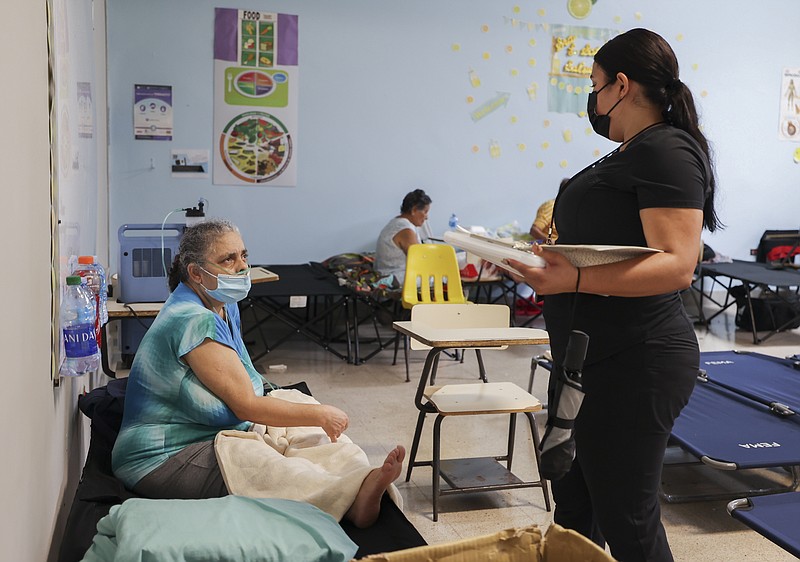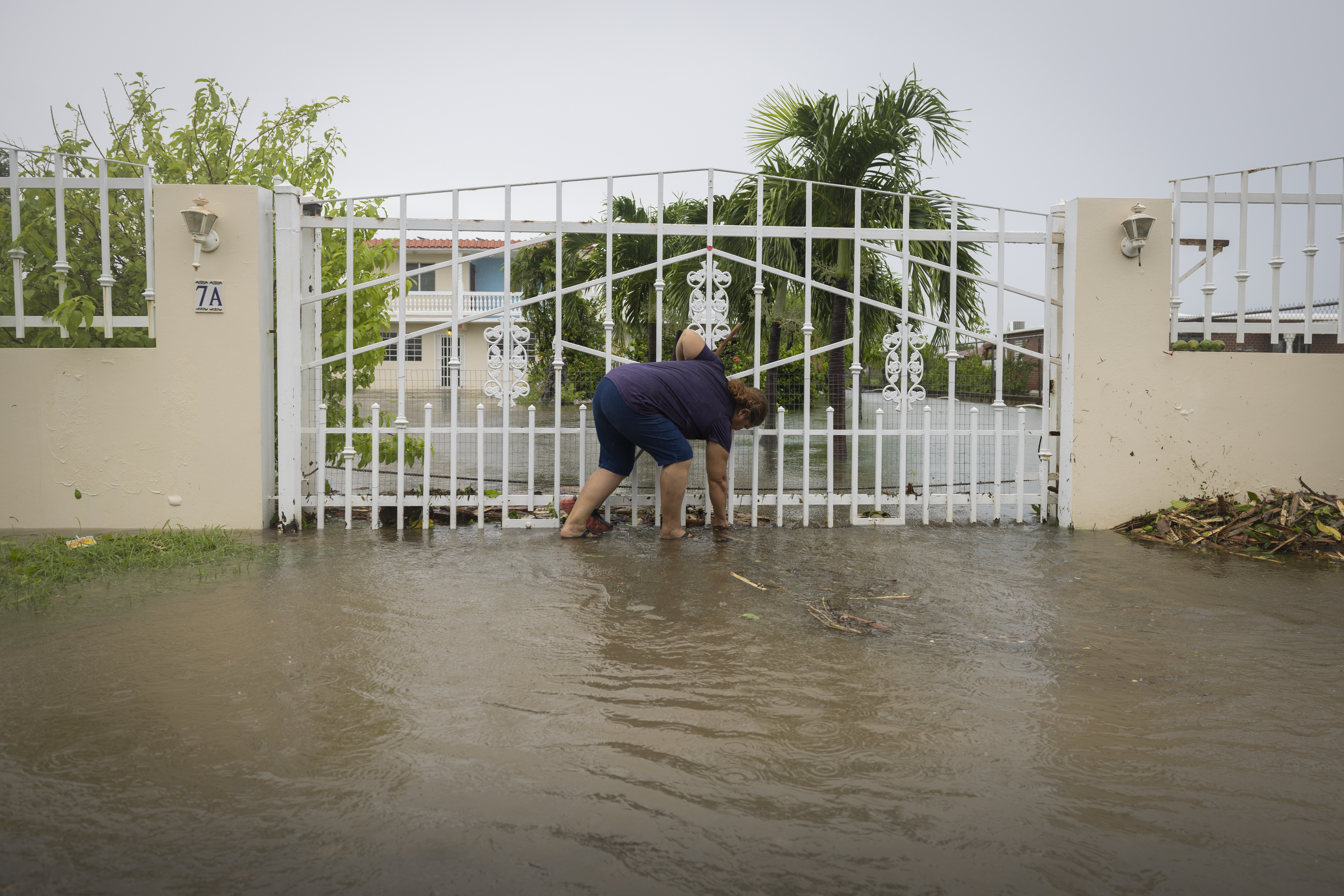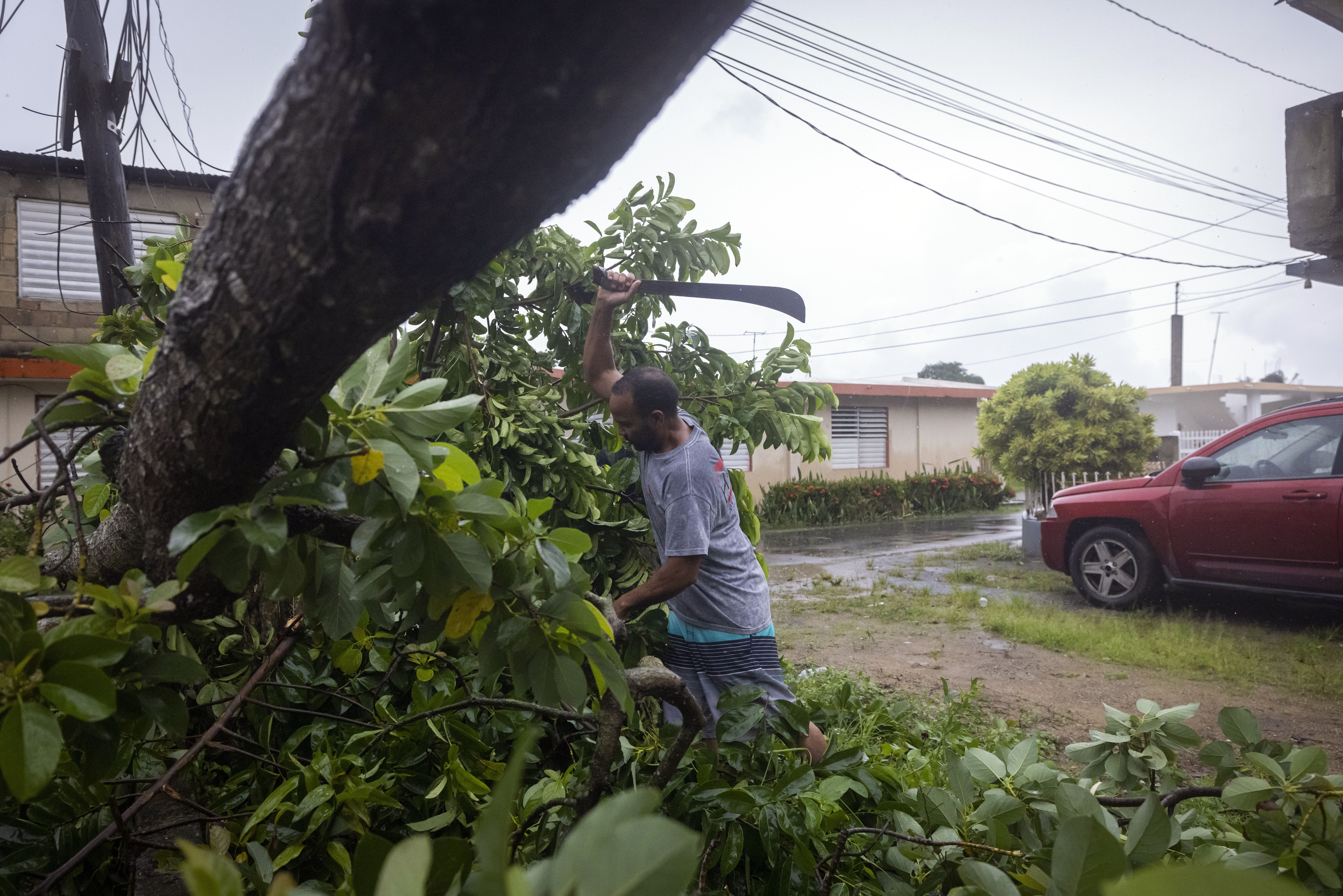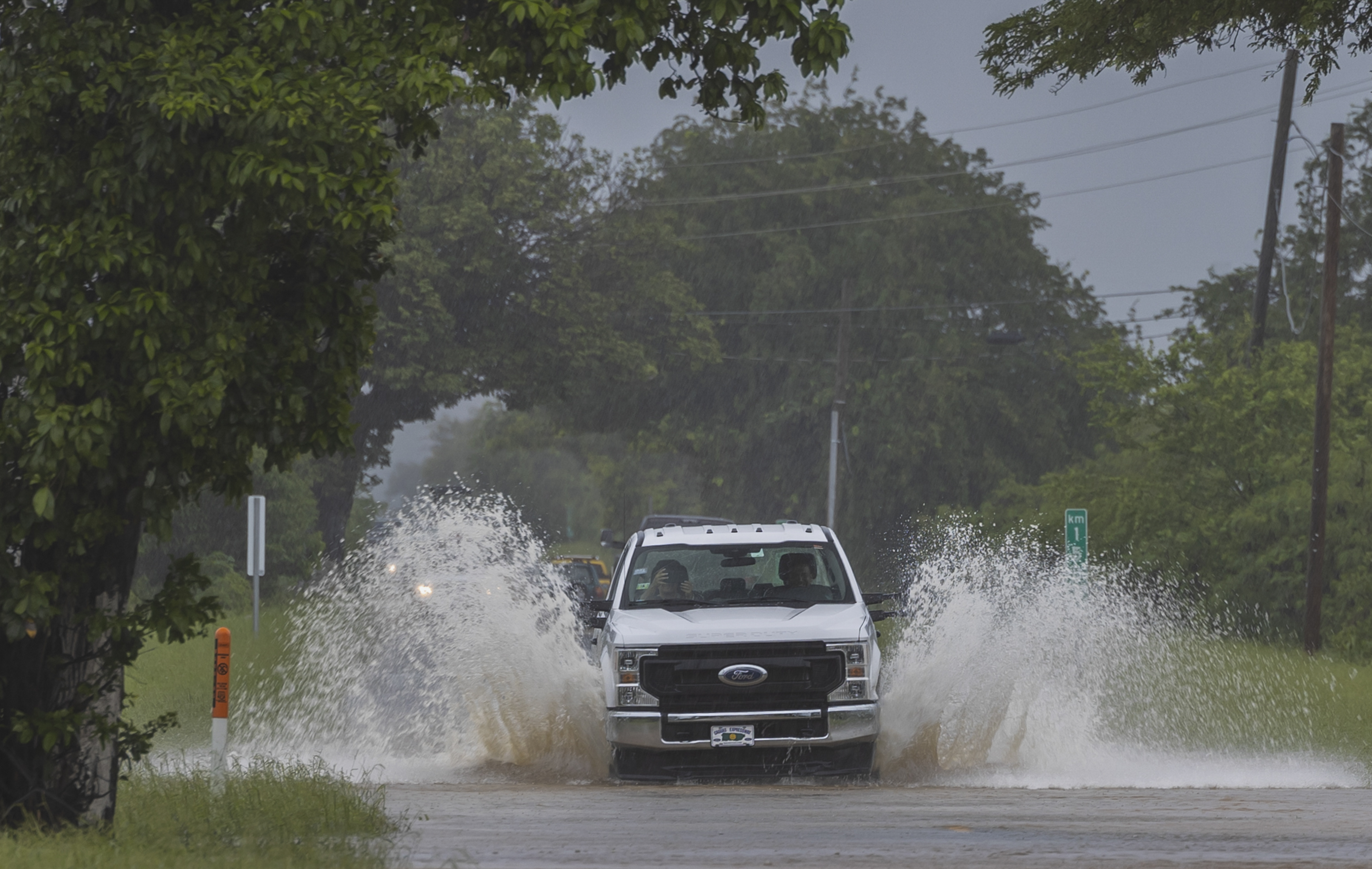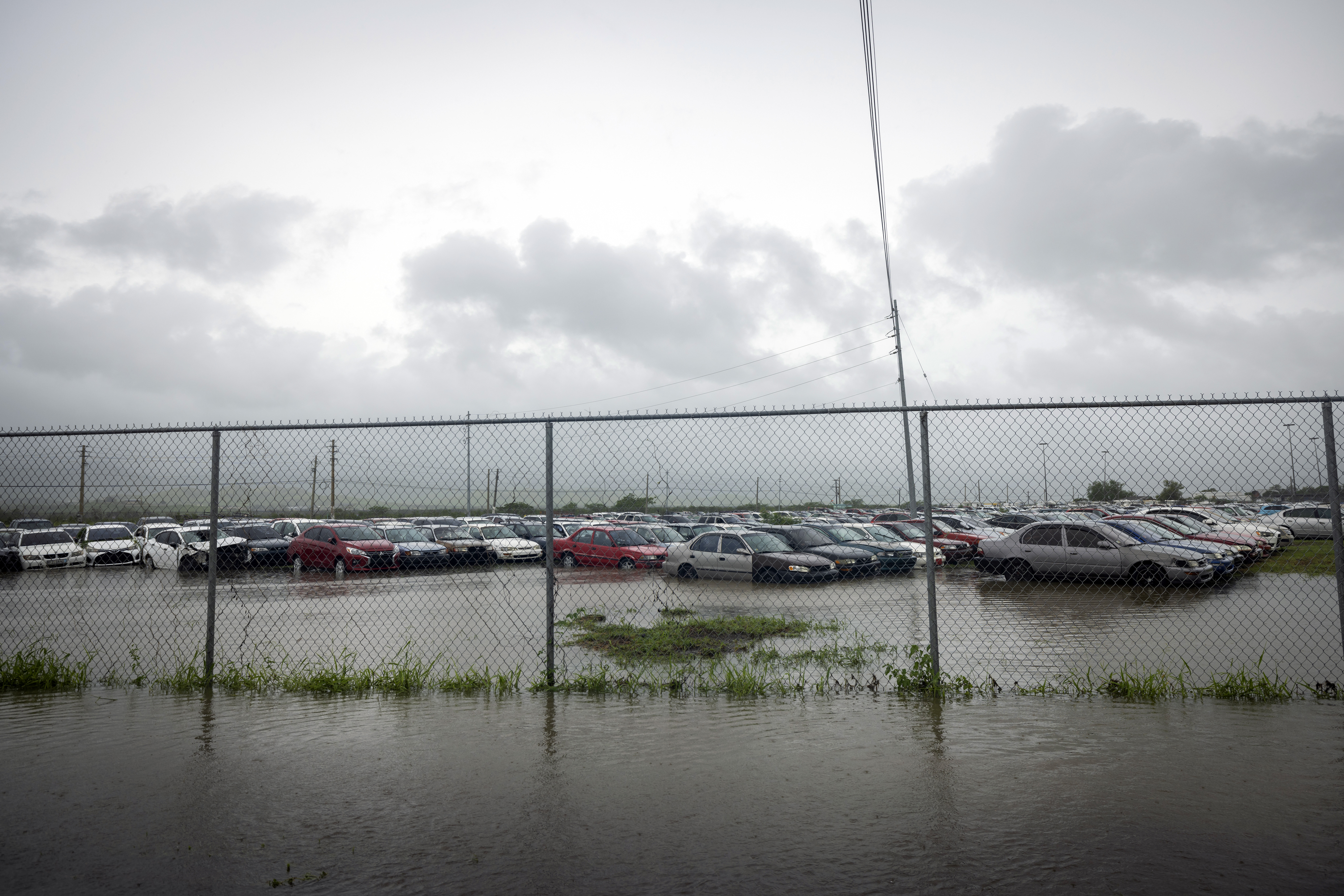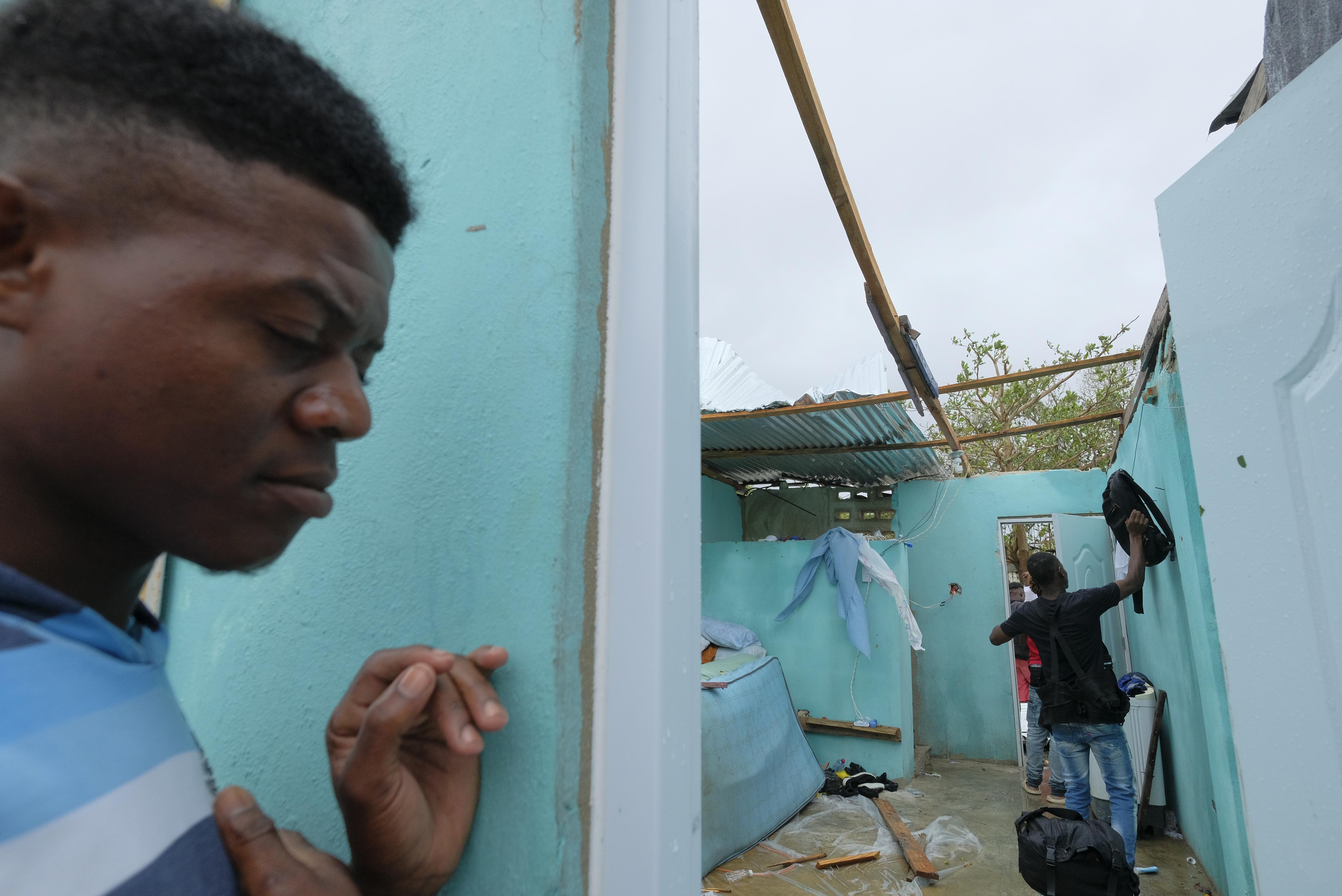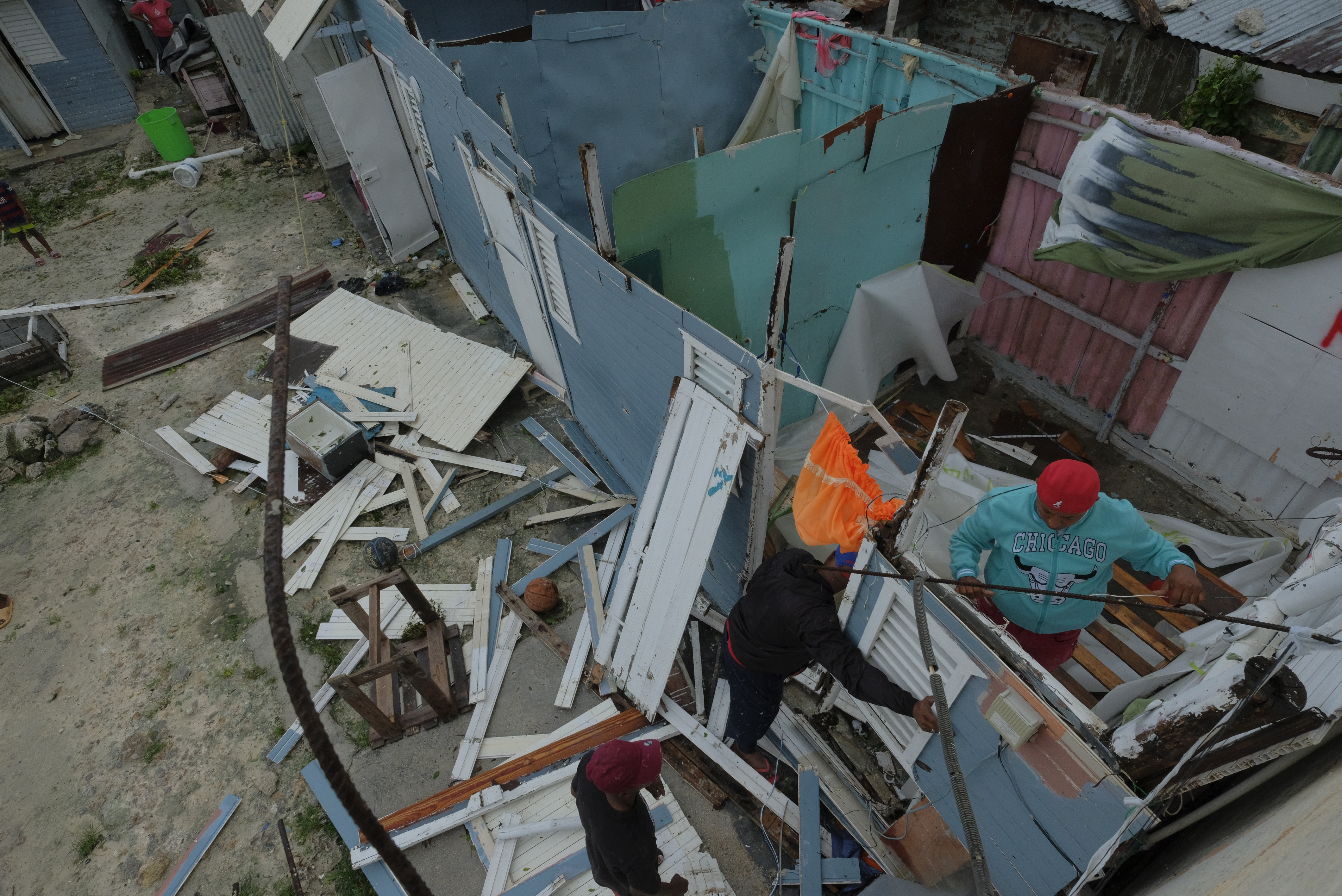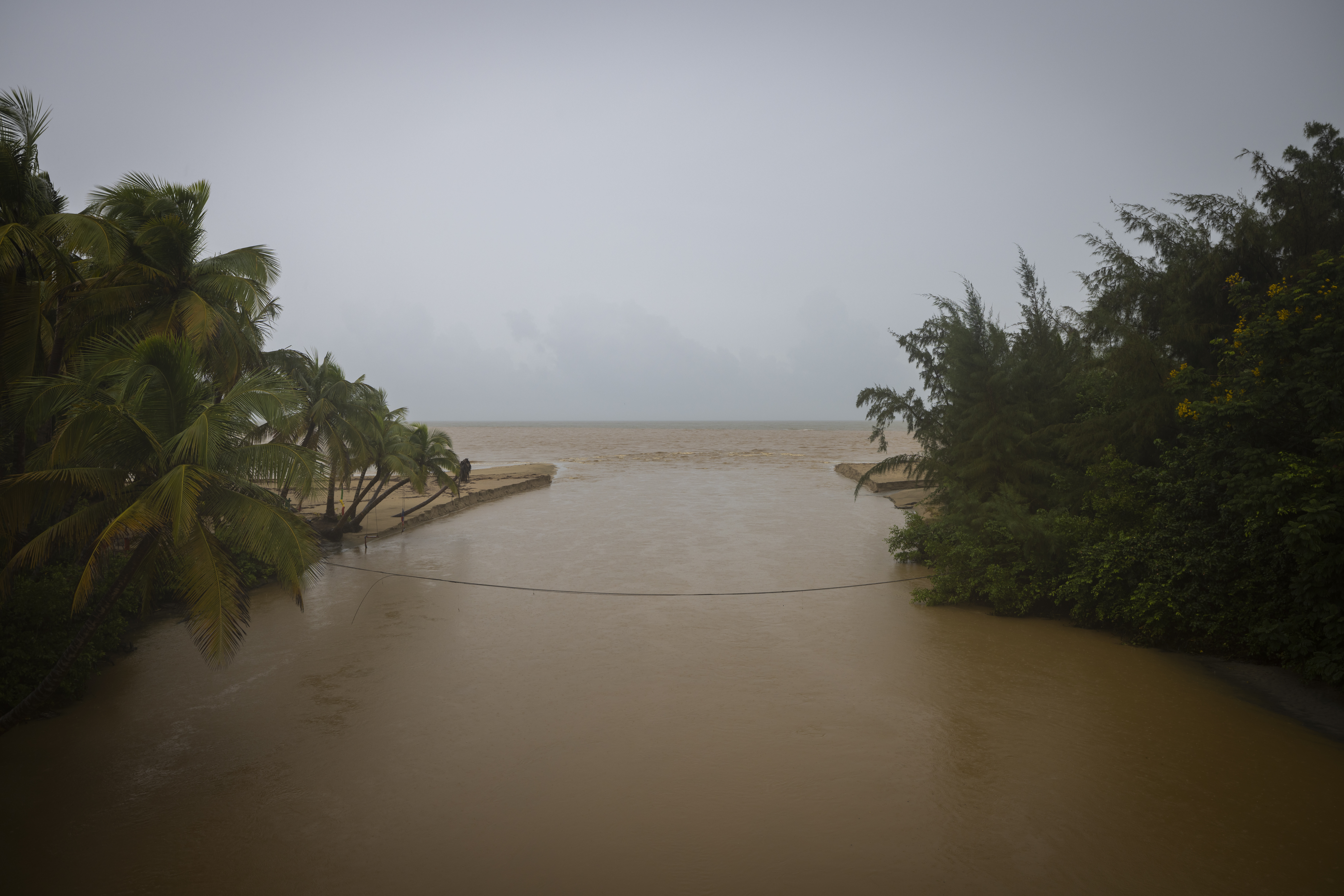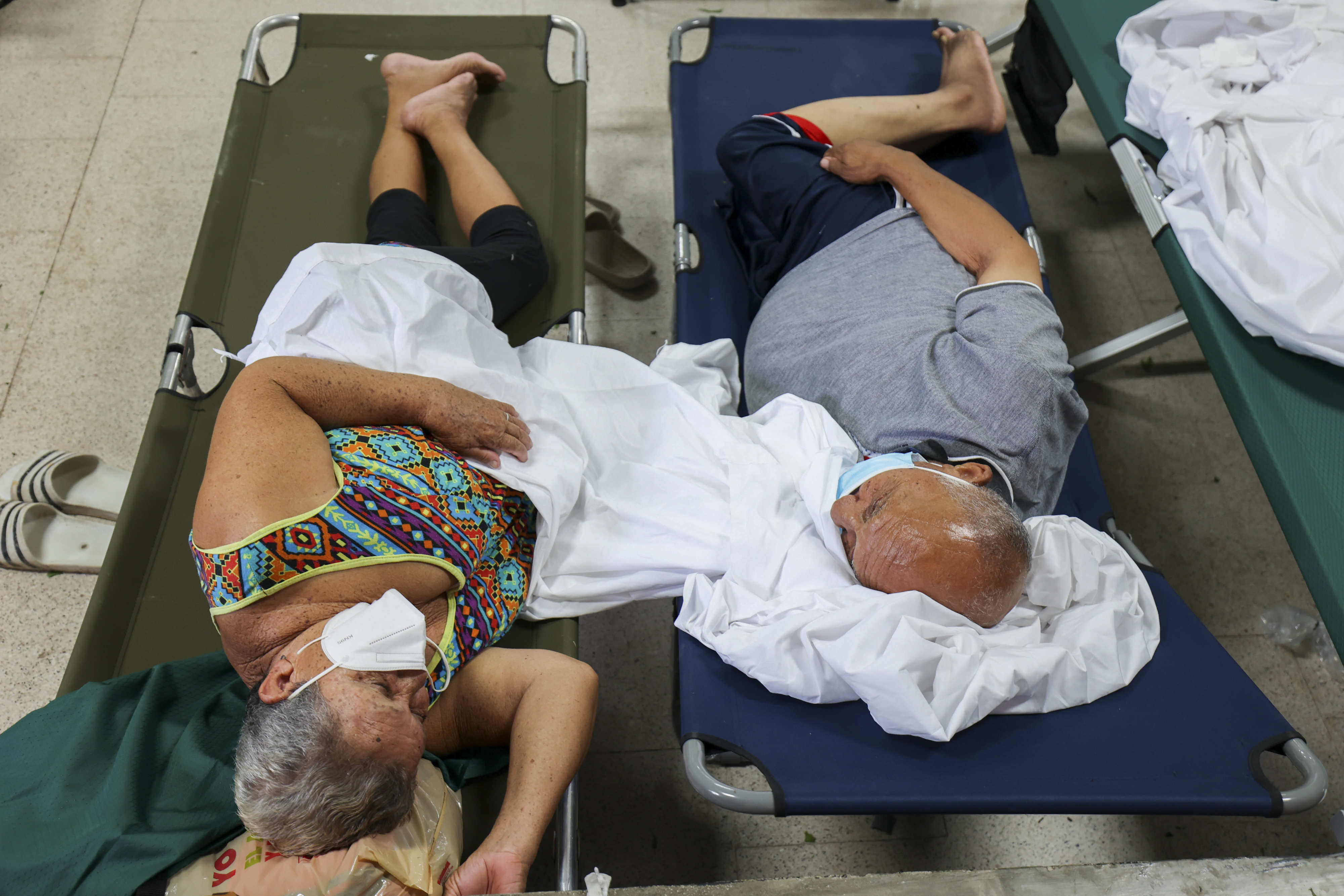SAN JUAN, Puerto Rico -- Hurricane Fiona unleashed more rain on Puerto Rico on Monday, a day after the storm knocked out power and water to most of the island, and National Guard troops rescued hundreds of people who got stranded.
The governor warned that it could take days to get the lights back on.
The blow from Fiona was made more devastating because Puerto Rico has yet to recover from Hurricane Maria, which killed nearly 3,000 people and destroyed the power grid in 2017. Five years later, more than 3,000 homes on the island are still covered by blue tarps.
The storm stripped pavement from roads, tore off roofs and sent torrents pouring into homes. It also took out a bridge and flooded two airports.
Authorities reported two deaths from the hurricane -- a Puerto Rican man who was swept away by a flooded river and a person in the Dominican Republic who was hit by a falling tree.
The storm was still expected to dump up to 15 inches of rain in some places as it spun away from the U.S. territory that is home to 3.2 million people.
Forecasts called for the storm to grow into a major hurricane of Category 3 or greater. It was on a path to pass close to the Turks and Caicos islands today and was not expected to threaten the U.S. mainland.
One death in Puerto Rico was associated with the blackout -- a 70-year-old man who was burned to death after he tried to fill his generator with gasoline while it was running, officials said.
Some Puerto Ricans said Hurricane Fiona took them by surprise, and many in the hardest-hit areas were still waiting for government help Monday as neighbors came together to clear fallen trees from roads and remove debris from homes. Gov. Pedro R. Pierluisi urged people to stay indoors. He said he expected most electricity to be back up "in a matter of days." By Monday morning, power had been restored to some 100,000 customers, out of 1.5 million.
The federal government paid $3.2 billion to patch up the island's electrical grid in Hurricane Maria's wake. But that was just to get the power back on; Congress earmarked an additional $10 billion to modernize the antiquated and inefficient system.
Because the Puerto Rico Electric Power Authority is bankrupt, the fiscal board appointed by Congress to oversee the island's finances required that the power transmission and distribution system be privatized before funds from the Federal Emergency Management Agency could go to any upgrades.
In 2020, Puerto Rico awarded a 15-year contract to Luma Energy, a private Canadian-American consortium, for a fixed annual fee of $115 million. After taking over in June of last year, the company quickly struggled with rolling summer blackouts. There was an island-wide outage in April, with no bad weather in sight.
Pierluisi declined to say how long it would take to fully restore electricity, but he said for most customers it would be "a question of days."
Since the start of the storm, National Guard troops have rescued more than 900 people, Gen. Jose Reyes told a news conference.
Meanwhile in the Dominican Republic, authorities closed ports and beaches and told most people to stay home from work. Nearly 800 people were evacuated to safer locations, and more than 700 were in shelters, officials said.
The hurricane left several highways blocked, and a tourist pier in the town of Miches was badly damaged by high waves. At least four international airports were closed, officials said.
Back in Puerto Rico, the National Weather Service office said flash flooding was occurring in south-central parts of the island and tweeted, "MOVE TO HIGHER GROUND IMMEDIATELY!"
Up to 22 inches of rain fell in some areas of Puerto Rico, and forecasters said another 4 to 8 inches could fall as the storm moves away, with even more possible in some places.
"It's important people understand that this is not over," said Ernesto Morales, a weather service meteorologist in San Juan.
He said flooding reached "historic levels," with authorities evacuating or rescuing hundreds of people across Puerto Rico.
"The damages that we are seeing are catastrophic," Pierluisi said.
Water service was cut to more than 837,000 customers -- two thirds of the total on the island -- because of turbid water at filtration plants or lack of power, officials said.
Before dawn Monday, authorities in a boat navigated the flooded streets of the north coast town of Catano and used a megaphone to alert people that the pumps had collapsed, urging them to evacuate as soon as possible.
Authorities said at least 1,300 people spent the night in shelters across the island.
Brown water poured into streets and homes and closed airports in Ponce and Mayaguez.
The system also ripped asphalt from roads and washed away a bridge in the central mountain town of Utuado that police said was installed by the National Guard after Maria hit as a Category 4 storm.
Comparisons to Hurricane Maria were inevitable, from both residents and officials.
The island's hospitals were running on backup generators, in stark contrast to 2017, when many lost power, damaging medical equipment and leaving hundreds of sick patients dangerously at risk. About 75% of cellphone towers were still functioning after the storm passed, compared with the near-total signal wipeout five years ago.
Pierluisi stressed that officials were still in the rescue-and-response phase of the emergency and had not begun to assess the scale of the damage, or determine the island's path to recovery. Still, he said, the local government's response had so far been "exemplary" compared with what happened after Maria.
"Maria served as a lesson, an exercise for our emergency response teams at all levels," Pierluisi, a member of the pro-statehood New Progressive Party who took office in 2021, said in a news conference. "In terms of the coordination we've seen, there's a big difference.
Fiona also tore the roofs off homes, including that of Nelson Cirino in the northern coastal town of Loiza.
"I was sleeping and saw when the corrugated metal flew off," he said as he watched rain drench his belongings and wind whip his colorful curtains into the air.
After roaring over the Dominican Republic, Fiona moved into the open Atlantic, where it was projected to strengthen, according to the National Hurricane Center.
On Monday evening, it was centered about 130 miles southeast of Grand Turk Island and heading northwest at 10 mph, with maximum sustained winds of 105 mph.Tropical storm-force winds extended for 140 miles from the center.
U.S. President Joe Biden declared a state of emergency as the eye of the storm approached the island's southwest corner.
Pierluisi said he had been coordinating with the White House to receive assistance. Biden's emergency declaration on Sunday unlocked crucial federal funding and FEMA support. Biden called Pierluisi from Air Force One as the president flew back from the funeral of Queen Elizabeth II in London, according to the White House.
States also lined up to send mutual aid. New York said more than 100 Spanish-speaking members of the State Police would help clear streets, direct traffic and respond to other needs in Puerto Rico.
Most customers who had electricity on Monday, including a couple of hospitals, were in the San Juan metropolitan area, which was spared the worst of Hurricane Fiona's rains.
Fiona previously battered the eastern Caribbean, killing one man in the French territory of Guadeloupe when floodwaters washed his home away, officials said.
The system hit Puerto Rico on the anniversary of Hurricane Hugo, which slammed into the island in 1989 as a Category 3 storm.
DOMINICAN REPUBLIC HIT IN EAST
The Dominican Republic declared a state of emergency in eight eastern provinces Monday, after Hurricane Fiona tore through the country's tourism hub on its path north through the Caribbean.
The storm killed at least one person -- a 60-year-old man who was hit by a falling tree in the northern province of María Trinidad Sánchez, just as Fiona was exiting the country, according to local media.
The country is only beginning to evaluate the full extent of the damage from the worst natural disaster in at least five years, Luis Abinader, the country's president, told reporters at the National Palace on Monday afternoon. His energy minister, Antonio Almonte, added that it may take days to restore water and electricity to the worst-hit communities.
Abinader said three of the worst-hit provinces would be declared "disaster zones," including the area around the city of Punta Cana, one of the biggest tourist destinations in the Caribbean. The president did not provide an estimate of the number of affected citizens or economic damage, and he declined to say whether he would send the military to help with the rescue efforts.
Although Fiona left the Dominican Republic on Monday afternoon, heavy rains continued lashing the country's east, complicating the work of emergency services, Abinader said.
The Dominican Republic's top meteorological official said the country's eastern provinces remained threatened by rising rivers.
"Just because there's calm doesn't mean that the event has passed," said Gloria Ceballo, director of the National Meteorological Office, adding that strong winds and heavy rain were common after the eye of a hurricane passed over.
Separately, the local power company CEPM, which supplies electricity to about 100,000 hotel rooms and residential homes in the Punta Cana area, said in a statement that the hurricane had affected supply to about 60% of its customers.
The Dominican Republic's tourism chamber said the Punta Cana airport expected to reopen flights Monday night.
Information for this article was contributed by Maricarmen Rivera Sanchez and Danica Coto of The Associated Press and by Hogla Enecia Perez, Anatoly Kurmanaev, Laura N Perez Sanchez and Patricia Mazzei of The New York Times.

